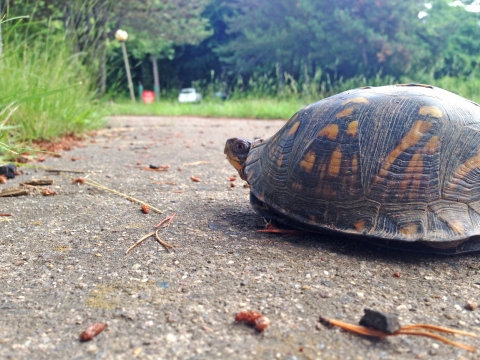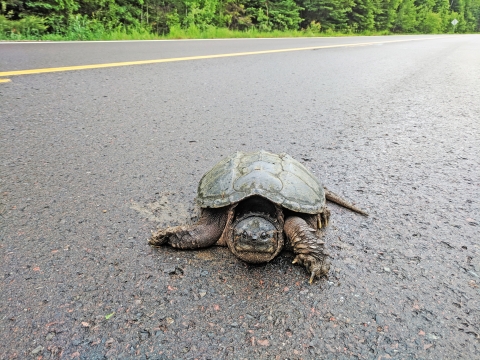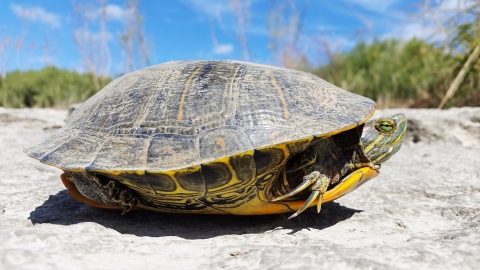This time of year many wildlife, like turtles, are on the move. As the weather warms, turtles go in search for new territory, breeding opportunities and quests for food. Many females will travel to find ideal places to lay their eggs and will often cross the roads. Please keep a lookout for them while you’re driving this season.
- Always keep your own safety in mind - watch out for oncoming vehicles, signal properly when pulling over and recognize your surroundings first before working to help save an animal.
Be very careful when moving the animal - it could be injured or it could bite you depending on the species. If possible, sometimes it is best to just stand guard as the animal crosses the road on its own - especially if it is a protected species.
A Blanding's turtle crossing the road. - If the animal needs to be moved, move it to the other side of the road in the same direction it was going. Using a car mat can be a good way to help the turtles across without actually picking them up. By using a car mat or putting something under the turtle, you can slide the turtle in the direction it was going.
Do not pick the turtle up by the tail. Some turtles may be frightened and try to bite. Do not pick them up by the tail! This could seriously injure the turtle. You can safely help a snapping turtle in the road by using a car mat or by carefully holding them at the back of the shell and not the sides. Snapping turtles have very long necks and can bite your hands if you place them at the sides of the shell.
A common snapping turtle crosses the road after laying eggs. - Do NOT take it with you - please only focus on helping it get safely to the other side.
Get involved with roadside restoration and transportation projects: We’re working to make our roads and roadsides work for transportation and the environment. Learn more about road ecology and wildlife for ways to get involved at a local level.
A red-eared slider. - Learn more about wildlife laws in your state. Contact your State and Territorial Fish and Wildlife Office to verify what is legal for your state and ways you can get involved. You also are always welcome to contact your closest National Wildlife Refuge to learn more about what species to look out for.
- If possible, snap a photo and report sightings Herp Mapper to help track the movements of these reptiles.










